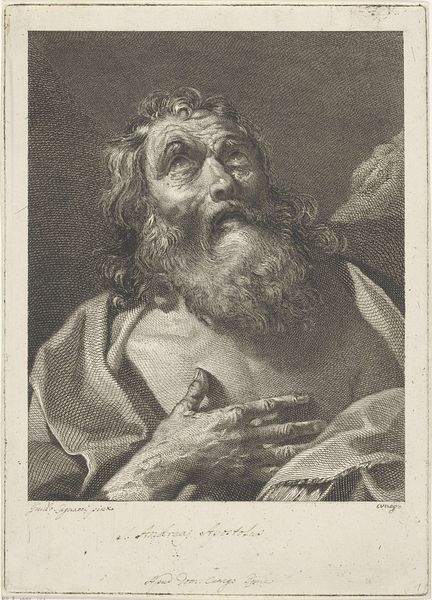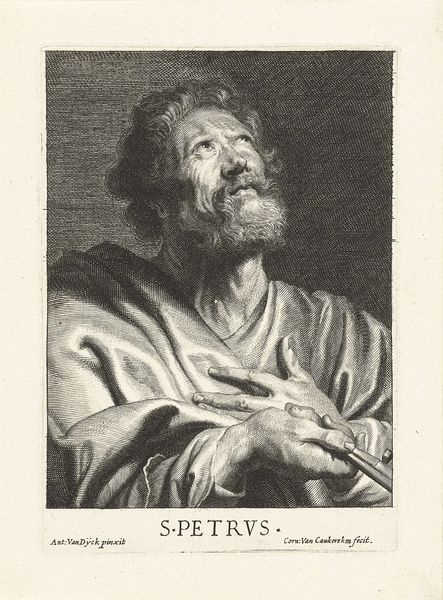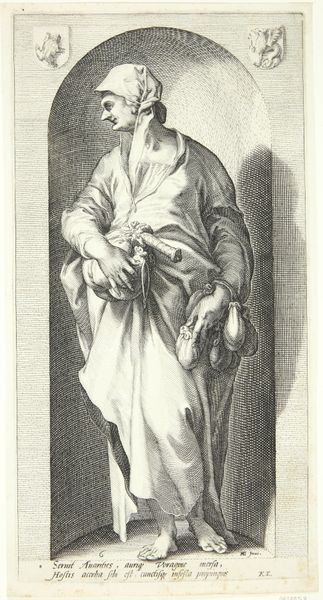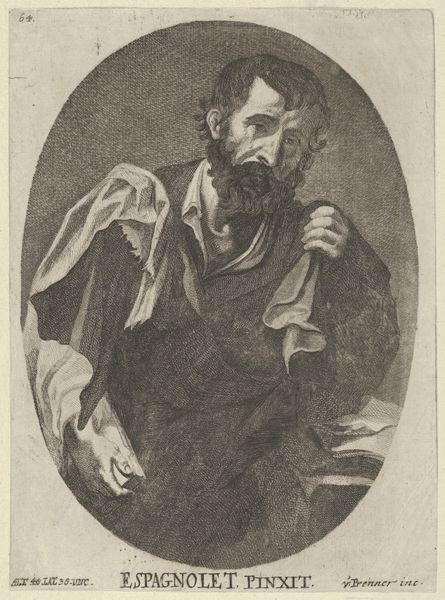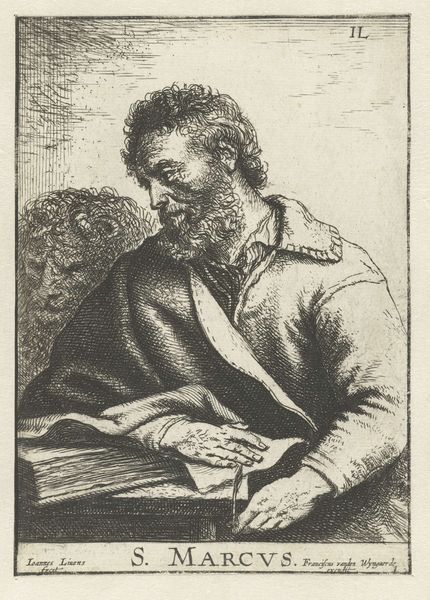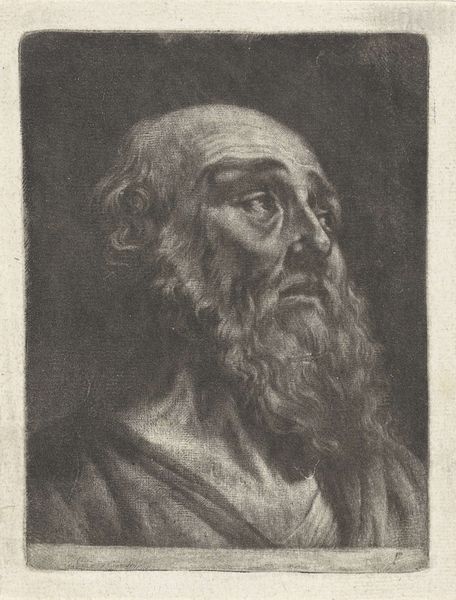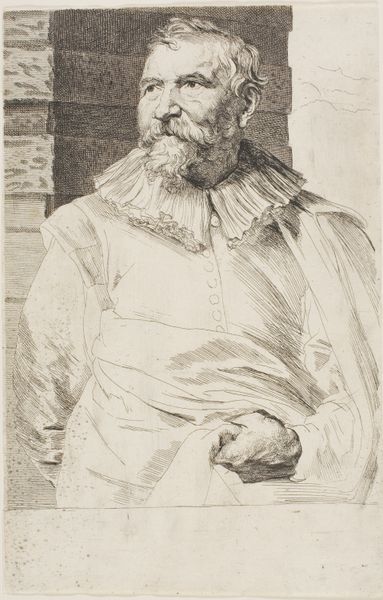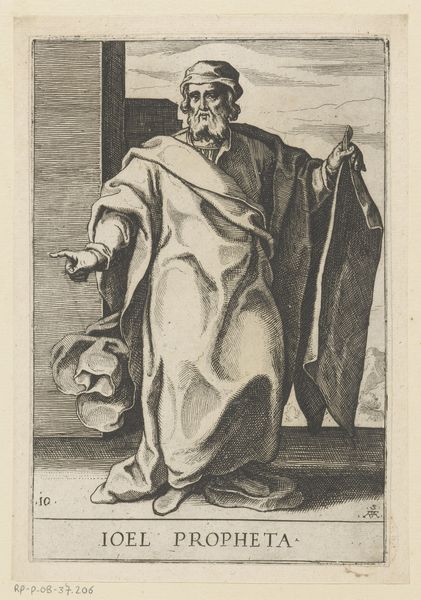
engraving
#
portrait
#
baroque
#
old engraving style
#
form
#
line
#
history-painting
#
engraving
Dimensions: height 165 mm, width 103 mm
Copyright: Rijks Museum: Open Domain
Curator: The subject here is "Borstbeeld van Heraclitus," or "Bust of Heraclitus," an engraving from the 1710s by Arnold Houbraken. It is currently held at the Rijksmuseum. Editor: Immediately striking is the austerity of this print. It feels incredibly severe, doesn't it? Almost stoic. Curator: That severity comes in part from the engraving process itself. Think about the labor involved: the precise, controlled carving into the metal plate to create the lines… it’s a physically demanding process demanding high levels of skill. That contributes to its look and feel. Editor: Yes, but more than just a production process, the lines created tell a story of thought and philosophy. The somber face with those shadowed eyes, it evokes Heraclitus's melancholic philosophy, doesn’t it? He was, after all, known as the "Weeping Philosopher." The dark shadows, especially, intensify that feeling. Curator: I can see that. But it's also crucial to look at how prints like this functioned socially. These engravings were not necessarily intended as high art. They were produced and consumed within a broader context of book illustration, serving educational and documentary purposes. The line work made duplication much easier than other contemporary practices. Editor: Of course, and prints such as these served an important purpose as didactic tools. The act of visualizing these iconic historical and literary figures made their philosophies seem all the more grounded and tangible, less abstract and distant. Heraclitus in particular becomes representative of the burdens of insight. Curator: That may very well be. As reproductions circulated, the value lay more in their informative and documentary qualities rather than aesthetic ones. Editor: I think both purposes have always been aligned, in a work such as this one. Ultimately, its somber lines and shadowy form remind us of the enduring power of symbols. Curator: It provides a great reminder of how technique is shaped by purpose, while simultaneously carrying its own historical weight. Editor: I concur, looking closely here offers a potent meeting of symbolic form and historical context.
Comments
No comments
Be the first to comment and join the conversation on the ultimate creative platform.
